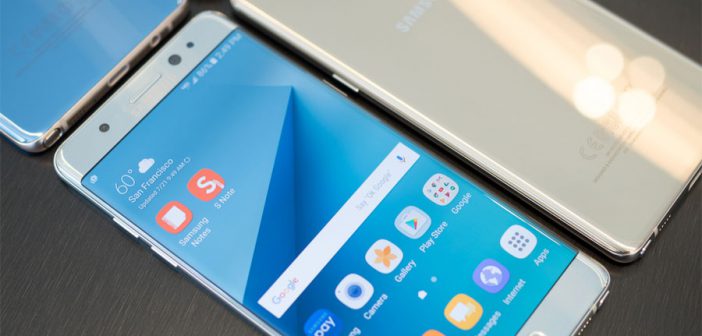It’s every marketer’s worst nightmare—your product suddenly presents a danger to consumers. It could be Chipotle’s E. coli, Blue Bell Creameries’ listeria, or General Motors‘ faulty ignition switches. And yes, it can happen to you. Just ask Samsung, which is now facing $2.3 billion in losses from its fire-catching Galaxy Note 7 smartphone.
The U.S. Consumer Product Safety Commission recalled the Samsung Galaxy Note 7 last month. Amid escalating headlines, the Federal Aviation Administration banned them from flights. But once the replacements started having the same problems, Samsung had to shut down production entirely. The decision is expected to shrink the company’s third-quarter profit by a third, but the long-term brand damage is incalculable.
In a worst-case scenario, what are the best steps to take if your brand gets enmeshed in a similar crisis? We asked the experts.
Be open with consumers, media, regulators, shareholders. That means not allowing corporate culture to get in the way. Gene Grabowski, partner at Washington, D.C.-based public affairs firm Kglobal, advises having “true conversations” with your brand’s audiences even if that flies in the face of established practice. “[You] have to be very transparent, which can be difficult for a company like Samsung that is large, complicated and layered and is also working within a Korean mindset and culture where it’s more traditional,” said Mr. Grabowski.
Follow through on promises and explain progress. For each step, show “progress milestones” to consumers and customers, said Howard Fencl, VP at Hennes Communications. “You have to tell anything you know when you know it” because words without action are meaningless, he said. In Samsung’s case, communication has been largely confined to its web page, last updated Oct. 13.
Halt all marketing. Wait until after the crisis is no longer in the spotlight to do marketing; before then, even ads for other products will remind consumers of your problems. “Take the money you’ve withheld from marketing for a few months and do extra marketing when you’re coming out; otherwise, you’re wasting your money,” Mr. Grabowski said. People close to the situation said that Samsung has pushed back its network TV buys until later this quarter.
If you must advertise, do so carefully. Maybe you have a big launch of another product line that can’t wait. That could apply to Samsung’s Gear VR headset, which uses a phone to operate and was predicted to be a hot holiday seller. Tech publications last week reported that Oculus, a partner on Gear VR, has added a software update that disables support for Note 7. Samsung added a hard-to-find notation about the update on its web page but could not be reached for comment at press time on marketing support for its VR device. Katie Sprehe, director-reputation research at APCO Worldwide, advises marketers in similar situations that if you need to advertise, make sure your marketing doesn’t ignore the crisis at hand.
Put a face on your company. Samsung “seems like a faceless company,” said Ms. Sprehe. “They need someone to speak with authority,” she said. Having a visible spokesperson will help instill more confidence in the brand among consumers, shareholders and employees. In its early communications, Samsung put forward Samsung America President-Chief Operating Officer Tim Baxter. He apologized in a video posted Sept. 16, but also said the replacement phones were safe—obviously before the company discontinued the Note 7 altogether.
Be first with the news. Don’t let someone else control your narrative. Samsung was slow in updating the public and posting on social media, which caused the company to “withdraw from the reputation bank that it’s been building up over all these years,” said Mr. Fencl. Being first to share information is critical, especially since “the first news cycle includes social media.”
Share as much as possible about internal procedures. Samsung’s internal processes “are under a microscope” right now, said Ms. Sprehe, especially after The New York Times reported that hundreds of engineers testing the Note 7 at the company weren’t allowed to email findings due to management’s fear of lawsuits. Balance internal controls with the public good. While Samsung may not be able to share a lot right now about what’s going on internally, it should try to give a little bit of information so it doesn’t seem like it’s being purposely nontransparent.
This article first appeared in www.adage.com
Seeking to build and grow your brand using the force of consumer insight, strategic foresight, creative disruption and technology prowess? Talk to us at +9714 3867728 or mail: info@groupisd.com or visit www.groupisd.com

